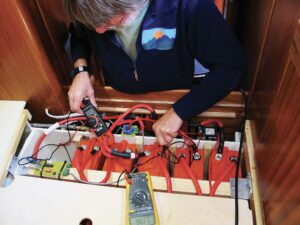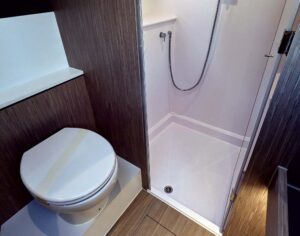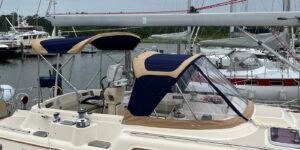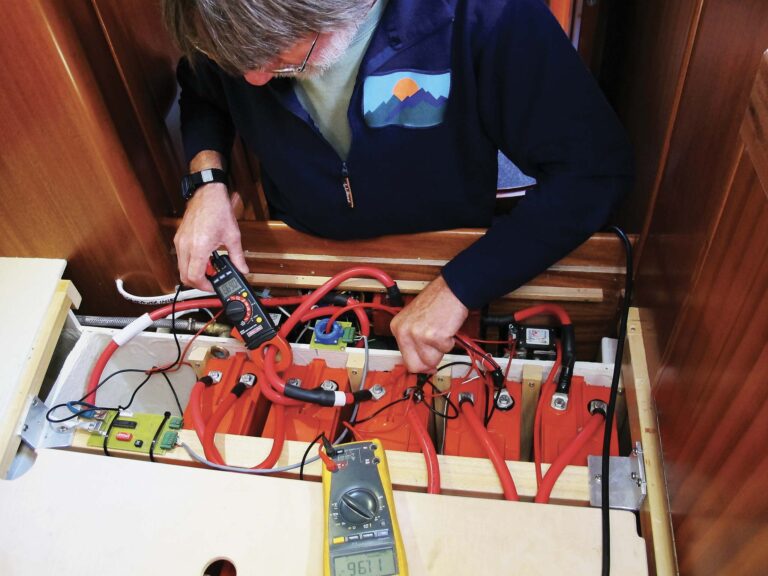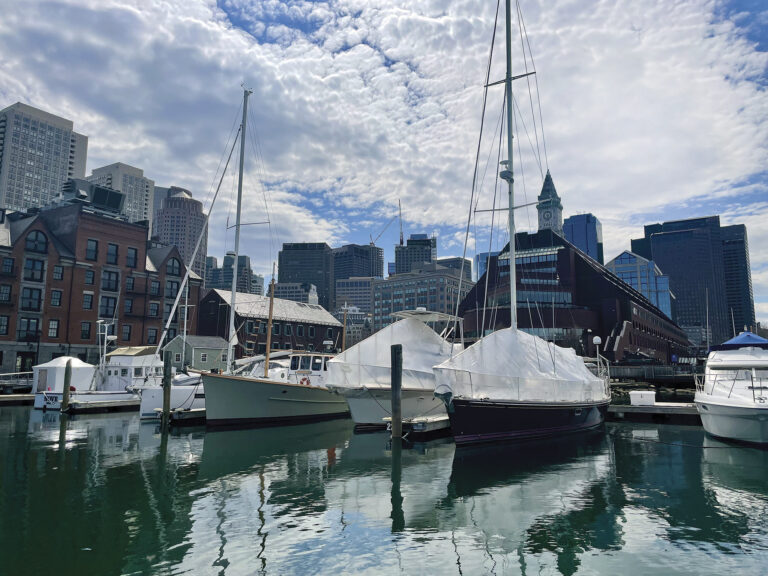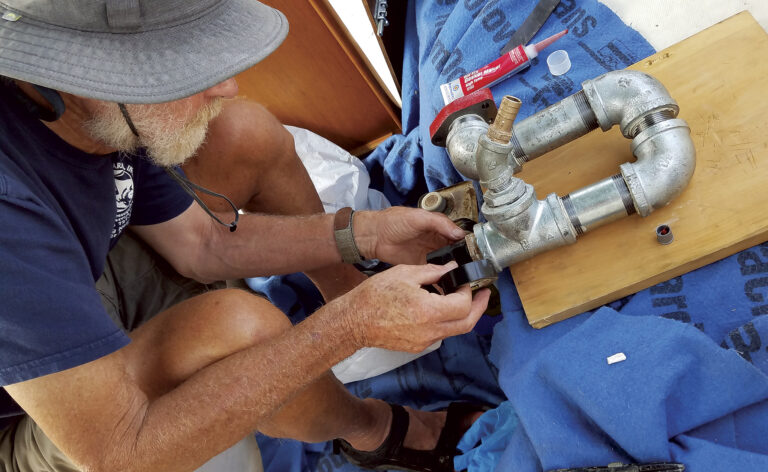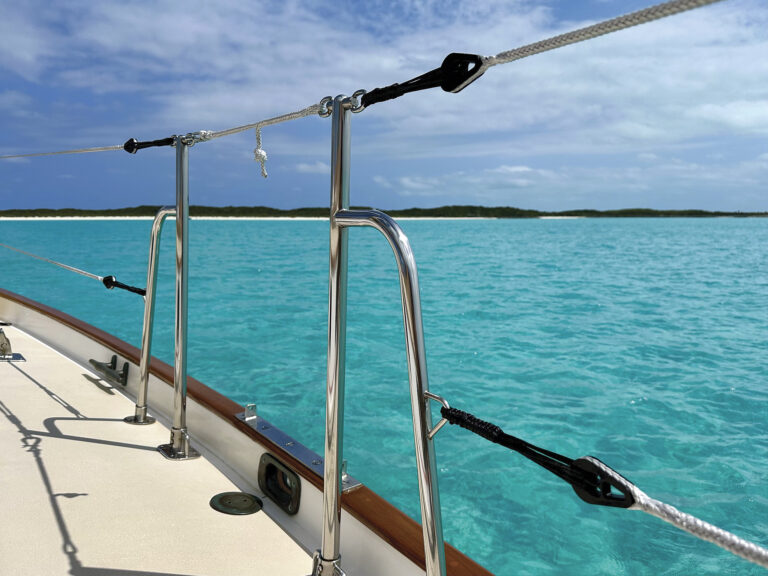Before I laid the boat up, I had to replace a bilge pump that had mysteriously stopped working. This was a secondary pump, serving to keep the water out of a poorly drained part of the hull forward of the mast step. It was a good opportunity for a quick photo tutorial on connecting 12-volt wires together. Yes, this sounds remedial, but I have seen enough botched jobs on boats to know that you can’t take knowledge for granted, and electrics is one of those things that somehow scares people.
So, here goes.
1. It’s important to keep any connections in wiring as far above the bilge as possible, so pumps tend to come with long wires. I leave them that way.
2. The pump draws 5 amps, so after consulting the wire size table at emarine.com I’ve chosen 14-gauge cable for the 8ft run from switch panel to bilge pump. I could have gotten away with 16-gauge, but I’d rather use a bigger wire and have less chance of voltage drop. Here, I’m using my trusty Swiss Army knife to slice through the sheath of the duplex cable.
3. A pair of sidecutter pliers makes short work of trimming the sheath back.
4. I’ve just cut the wire sheathing to expose the tinned copper wire in this Ancor marine grade cable. Don’t be tempted to use cheap automotive cable–it won’t last nearly as long as tinned cable.
5. I’m using Ancor butt splice connectors here, because the connection will be permanent. I mislaid my expensive crimping tool, so I’m using Old Faithful—the basic crimping that’s available cheaply just about anywhere. It’s not the best tool, but it’s good enough.
6. I’ve slid a length of heatshrink tubing over the wire before making the connection. Next I’ll give the wire a good hard tug to make sure the connection is strong.
7. It’s good, so now I apply heat to shrink the tubing over the connection. I would ideally use a heat gun, but I have no access to 120-volt power, so it’s down to the gas match I use to light the grill. It does a fine job, as long as you’re careful to keep it a respectable distance from the wire.
8. The finished product–the heatshrink tubing is nice and snug over the connection, which should now be watertight.
9. If you doubt the necessity of sealing connections, check out this photo. The copper strands have been exposed to bilgewater and have corroded all the way through. Even tinned wire can’t stand up to this kind of abuse.

